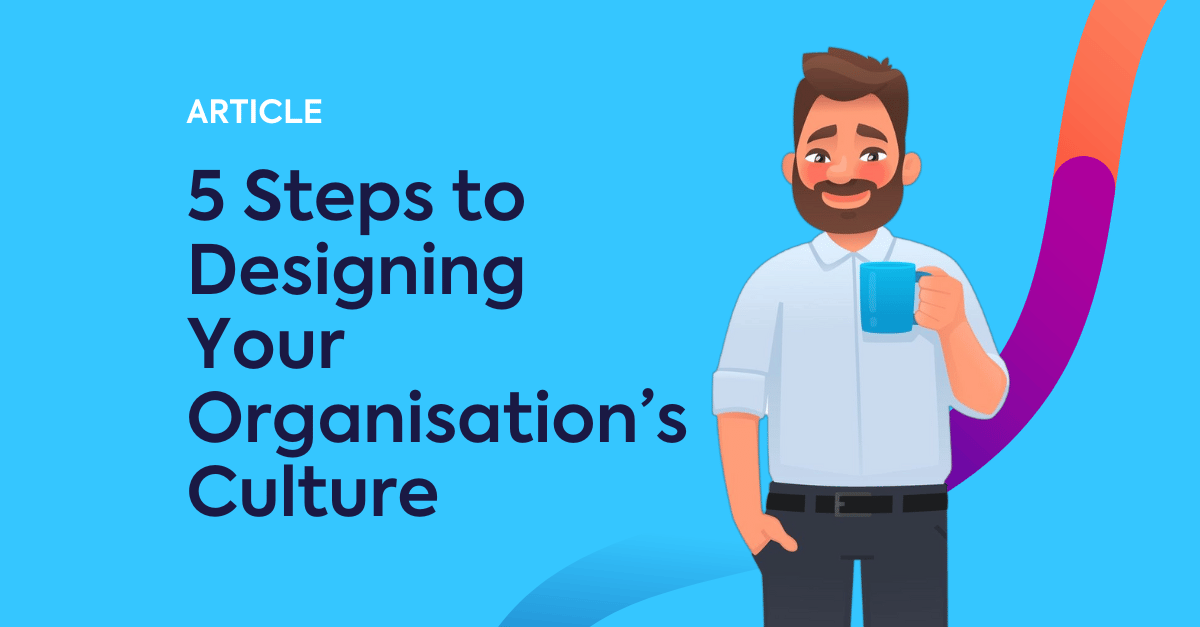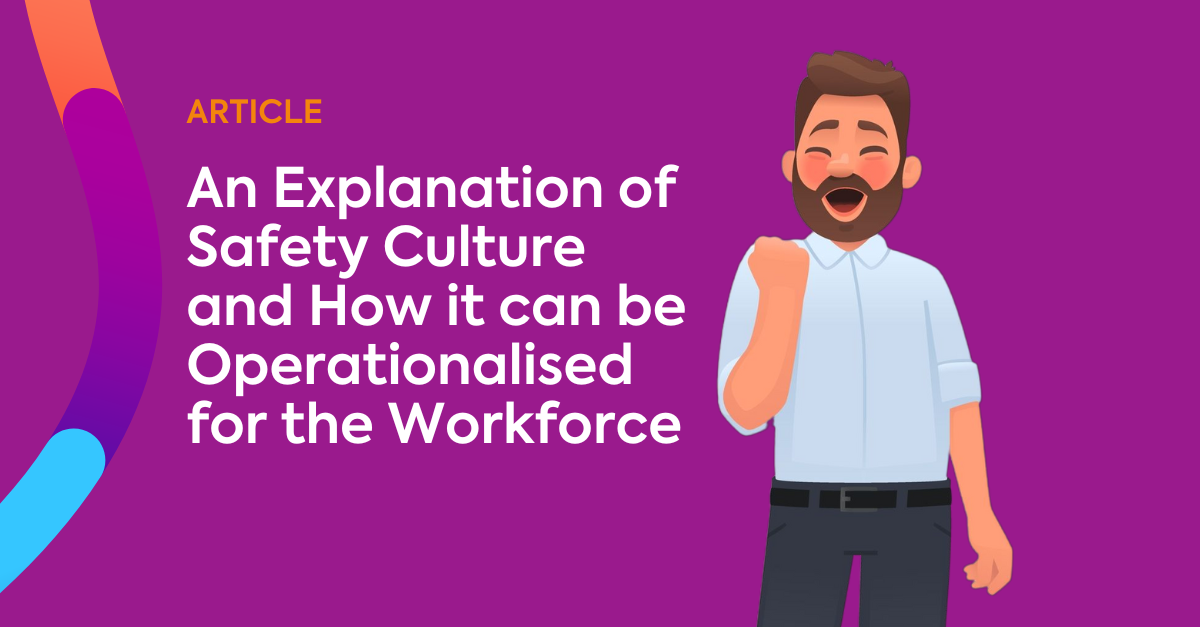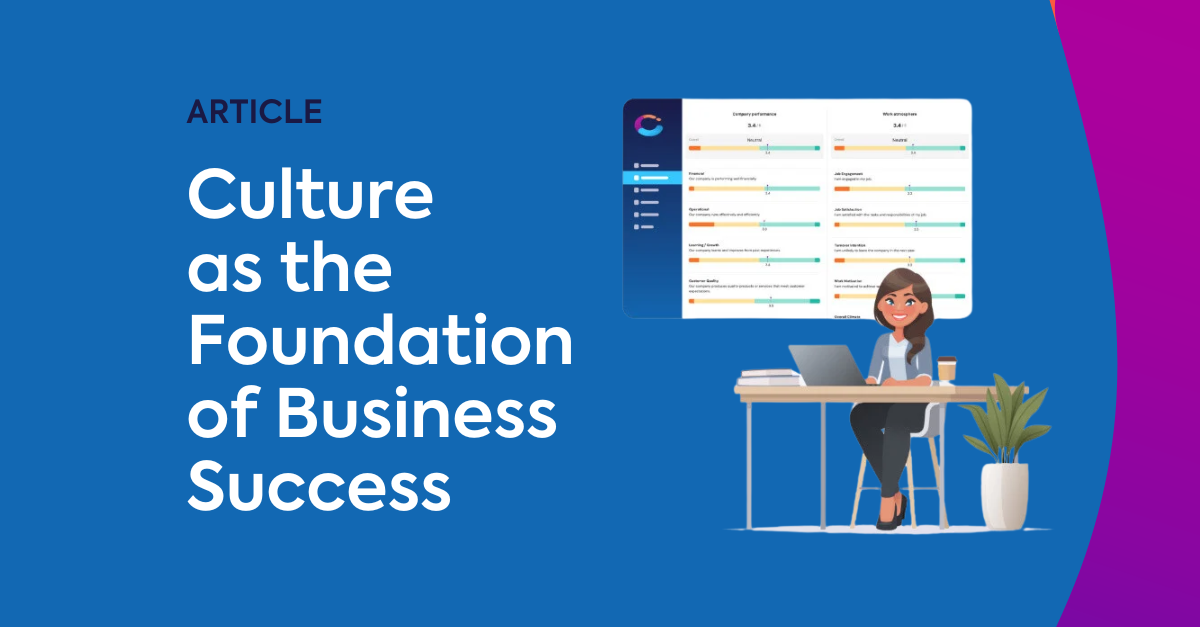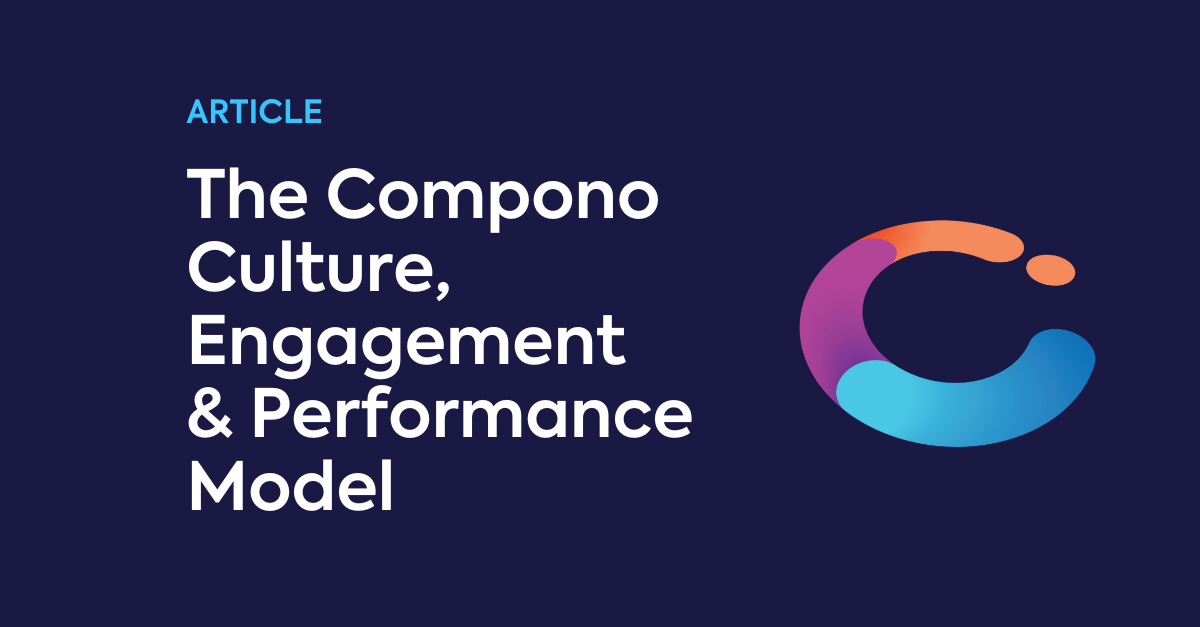Workplace culture: building a foundation for organisational success
Every organisation has a workplace culture—the question is whether it’s working for you or against you. Workplace culture is often referred to as...
Become the expert on delivering
valid and fair assessments for
your training and education.
Hire
|
Engage
|
Develop
|
|
Automatically match to candidates who are a great fit for your team culture and who are intrinsically motivated to succeed. |
Deeply understand your organisation with science-backed analytics on your culture, team design, and engagement. |
Back your onboarding, compliance and skill development with industry-leading credentialling, competency and capability expertise.
|
.png?width=383&height=200&name=team%20(1).png)

Last weekend, I attended a friend’s BBQ where we discussed sports and the country’s economic state, when inevitably the conversation turned to work. For many of us, we spend a large portion of our days at work; in fact, the average person will spend 90,000 hours at work over a lifetime adding up to roughly 1/3 of your life spent at work.
So it is only natural that we talk about our workplaces when in a social setting, as it can make a huge impact on our quality of life. Comments about work typically range from
“I love the company I work for — it’s a really great place,”
to
“the work environment is toxic and I need to get the hell out of there,”
and anything in-between. I am sure you can relate to these statements and may have made similar “throwaway” statements yourself when discussing your workplace with friends and family. Upon closer inspection, these comments provide great insight into the culture of your organisation and therefore, the health of the workplace.
It is at this point where I hear a lot of managers and business owners say — “Employees will talk, you can’t do much about it and you can’t keep everyone happy. Business has been doing fine without me worrying about its culture. So why should I care now?”
Although organisational culture as a concept is not new, it is now recognised as one of the most important topics in corporate boardrooms, and for good reason.
Organisational culture is one of the most powerful tools for business success today and in order to build a sustained competitive advantage it must be managed like any other part of the business.
In his seminal work entitled, “Organizational Culture and Leadership,” Edgar Schein, Professor Emeritus at MIT wrote:
“The only thing of real importance that leaders do is to create and manage culture. If you do not manage culture, it manages you, and you may not even be aware of the extent to which this is happening.”
Every organisation has its own unique personality, just like people do.
The unique personality of an organisation is its culture. In groups of people who work together, organisational culture is an invisible yet powerful force that can make a deep impact on employees and their behaviour, as well as their relationship amongst themselves.
One popular definition of organisational culture is, “The way we do things around here.” Although simplistic, this definition captures an important concept — organisations need to do more than simply get things done.
To have a sustainable business and build a competitive advantage, it is important that things are done the ‘right way’. Implied in this definition is that each organisation has a certain way of how it goes about meeting its goals and objectives, provides a sense of direction and purpose for employees, solves problems, and shapes the behaviour of the individuals within the group.
An effective organisational culture results in a high-performing company, while an ineffective culture results in internal conflict and poor performance.
Knowing how to create a culture that will produce the performance you want is a key attribute of leadership and an important component of good stewardship.
The impact of organisational culture on employee behaviour and performance is based on three important concepts:
Left to their own devices, organisations will develop cultures in an organic and an often, haphazard way. Cultures that develop organically sometimes just get it right, but it is more luck than anything else. However, more often than not, at some point problems start to arise. Culture clashes begin to appear and performance begins to suffer.
The three main ways in which organisational cultures are created include:
A number of problems arise from the organic development of cultures. Founders retire or hand over the reins to people who may not share their philosophy or leadership style. They may try to impose their own values on the organisation, which conflict with the culture built up over the organisation’s early years.
As an organisation grows and different divisions and departments are formed, the culture may fragment as different subcultures develop in each.
Over time, the nature of the organisation’s business may change and the approach it has to take to survive in the new environment may also change. For example, at first the organisation may need to be entrepreneurial and adopt a culture suitable for rapid growth, but over time as it becomes established, it may need to adopt a culture suitable for consolidation and maintenance of market share.
Clearly then, the development of your organisational culture cannot be left to chance. Doing so will most likely result in conflicting subcultures and inconsistent business practices. Senior leaders, therefore, have to have a clear idea of what they want their culture to be and how to go about establishing it.
Understanding what is unique about your organisation’s heritage, what is strong in the current culture, and what the culture is missing provides a solid foundation upon which to build culture transformation efforts.
To gain this understanding, you will need to perform a gap-analysis or culture audit where you clearly define your desired culture and compare that to your current state. Identify the gaps and prioritise initiatives that will enable you to bridge those gaps.
“If you have been trying to make changes in how your organisation works, you need to understand how the existing culture aids or hinders you,” says Edgar Schein.
Aligning your management team is one of the most critical, and potentially most difficult steps in the process of building your organisational culture.
It starts with an evaluation of each member — how well does each manager embody the desired culture? How likely is it that he/she can break old habits and adopt new ones?
Often, a company finds that it needs to move new managers in and a few managers out to create the necessary enthusiasm and momentum.
A critical task for the CEO is to provide feedback to ensure that each team member is modelling the right values and behaviours for the rest of the organisation to follow.
Culture is a means to an end, not an end in itself. The end is your business’s strategic agenda. We tend to think that we can separate strategy from culture, but we often fail to notice that in most organisations, strategic thinking is deeply coloured by implicit assumptions about who we are and what our purpose is.
To create a culture that supports the strategic agenda, set targets for the business and be explicit about how these targets cascade down to individual managers and team members. Then hold managers accountable for delivering.
Performance reviews should focus on delivery against targets while paying close attention to problem areas. In communicating these expectations, company leaders must focus on attaining milestones, in addition to how each team and unit will contribute to achieving the desired outcomes.
Of equal importance, is the identification of desired employee behaviours. This involves specifying what counts as appropriate and acceptable behaviour and putting in place assessment processes to evaluate whether the culture is working effectively or not.
Identifying the motivational mechanisms (incentives and management commitment) that need to be in place in order to embed the desired culture in the current climate.
It is also important to identify the technical systems, processes, and procedures (management systems) that need to be implemented to enable staff to behave or perform effectively.
Similarly, it is important to identify the constraints and barriers (pressures) that block desired employee behaviour, while removing these blockers where possible.
Culture may be a soft concept, but it is shaped by hard disciplines, including organisation structure, decision rights, talent management systems, and measures and incentives.
For any deliberate culture transformation to occur, these elements must be aligned with the company’s set direction. For example, if you want to introduce speed into the culture, excessive layers of management that filter information will undercut a culture that values speed.
Clarifying accountabilities for key roles is crucial, as is building performance metrics that reward desired behaviours.
Culture change can be a long journey. To make sure the organisation is on the right path, leaders must remain attuned to employee’s perceptions and suggestions.
Maintaining momentum among employees requires consistent, sustained communication of the end goal and the behaviours necessary to get there. People want to feel excited about the future and rewarded for making progress toward it.
While the above list sounds like a lot of work that requires extensive expertise to execute, it is safe to say that Rome was not built in a day, nor is it possible to build an organisation’s culture in a day.
It will take time and effort to build and to embed the work environment that you want. Even then, you will not be finished, as culture development is an ongoing never-ending process of adapting to changing circumstances.
The list provided above is not there to scare you, but to give you guidance on what good practice looks like. The point here is that you do not need to do everything at once. Simply start by developing a cultural improvement plan and be sure to include defined milestones and timelines.
To this point, culture improvement initiatives will never move forward if you do not make it a part of the performance review process and management system.
At the end of the day, what gets measured gets done. Moreover, to design, execute, and implement the culture that you want can be more work than a full time job, and it might not be practical or even desirable for you to do everything on your own. This is precisely why Organisational Psychologists, Management Consultants, or Organisational Development departments exist, as they specialise on these topics. These experts are likely to know the what, where, when, and how of culture transformation and can help to significantly lighten the burden on your shoulders when executing your plan.
NOTE: This does not mean you can pass on or delegate all accountability. On the contrary, as a business owner or senior leader, the success or failure of your organisation’s culture still lies with you.
Your role is to openly support and sponsor the culture program of work and to role model the desired behaviours to the rest of the business.
I really like the saying “A fish starts rotting from the head.” No truer words have been spoken when it comes to culture transformation.
Culture change initiatives do not fail because the consultant or OD team did not implement the work correctly. They fail because senior leadership did not completely buy-in to the process, failing to lead from the front.
Finally, for those business owners that do not have the financial means to commission external resources or to employ OD teams, much of the culture work will rest on your shoulders. However, you don’t need to walk it alone as some of the implementation load can be shared with the rest of your team — even if they aren’t experts in the field.
A key prerequisite, however, is that you bring each and every team member along the journey right from the start to ensure there is buy-in. Additionally, it is important that you hire the right talent for your business!
At Compono, I am very fortunate to have a small, yet highly effective leadership team that acts as business owners and that have a deep interest in improving our work environment. Each one of them sees the importance of having a positive culture and is willing to adapt and transform our ways of work to achieve the business objectives.
In fact, most of the time my team is pushing me to do more organisational development work to ensure we stay on the right path culturally and strategically.
This is definitely something that I am very grateful for, as it is easy to be consumed by the daily grind and the ping of your email inbox.

Get the science-backed insights of a corporate psychologist, without needing to be one. 😉
Ahmed, A., & Shafic, A. (2014). The Impact of Organisational Culture on Organisational Performance: A Case Study of Telecom Sector. Global Journal of Management and Business Research, 14(3).
Bate, P. (1992). The impact of organisational culture on approaches to organisational problem solving. In: Salaman, G. (ed.), Human Resources Strategies. Sage, London.
Cooper, M. D. (2000). Towards a model of safety culture. Safety Science, 36(2), 111–136.
Deal, T.E., & Kennedy, A.A. (1982). Corporate Cultures: The Rites and Rituals of Corporate Life. Penguin Books. Harmondsworth.
Guldenmund, F. W. (2000). The nature of safety culture: a review of theory and research. Safety Science, 34(1), 215–257.
Lloyd, C. 2010. Assuring the competence of asset management staff. In Asset management, whole-life management of physical assets, ed. C. Lloyd London: Thomas Telford
Hudson, P. (1999). Safety Culture — the Way Ahead? Theory and Practical Principles. Centre for Safety Science, Leiden University, Leiden.
Meehan, P., Rigby, D., & Rogers, P. (2008). Creating and Sustaining a Winning Culture. Harvard Business Review.
Sanchez, P. (2004). Defining Corporate Culture. Communication World, 18
Schein, E.H. 1992. Organisational Culture and Leadership, 2nd edn. Jossey-Bass, San Francisco, CA
Schein, E.H. 1996. Three cultures of management: the key to organisational learning. Sloan Management Review, fall: 9–20
Schein, E.H. 1999. The Corporate Culture Survival Guide: Sense and Nonsense about Culture Change. San Francisco, Jossey-Bass, San Francisco, CA

Every organisation has a workplace culture—the question is whether it’s working for you or against you. Workplace culture is often referred to as...

As CEO of Compono, I’m a firm believer that it’s simply not enough for me and my team to focus only on building intelligent software. It is also...

As your organisation grows, hiring the right people becomes one of the most critical factors for success. Yet, many businesses struggle with the...

Understanding and measuring company culture is a critical aspect of building a successful organisation. Company culture is the invisible thread that...

Culture is the lifeblood of any organisation. From shaping employee behaviours to syncing teams toward a shared goal, a strong organisational...

Organisational culture and employee engagement don’t just shape your business; they define its success. Imagine a workplace where employees feel...